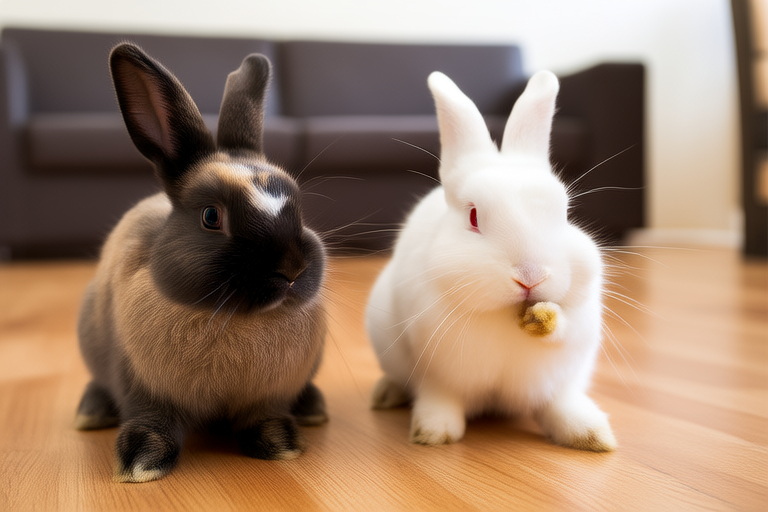Dutch Dwarf Rabbits Unveiled: A Comprehensive Guide for New Owners
Welcome to the world of Dutch Dwarf rabbits! These charming, compact creatures have become increasingly popular among rabbit enthusiasts for their unique appearance, gentle demeanor, and manageable size. Whether you’re a seasoned pet owner or just starting out, this guide will provide you with all the information you need to care for your new furry friend.
Introduction: Why Dutch Dwarfs Are So Popular
Dutch Dwarf rabbits are known for their distinctive coat patterns, small size, and friendly nature. Their striking coloration, often featuring a white blaze and contrasting colored patches, makes them stand out in any setting. Despite their tiny stature, they are robust and hardy, making them ideal pets for both urban and rural environments. Their manageable size also means they require less space than larger breeds, which is perfect for apartment living.
Physical Traits
The Dutch Dwarf is one of the smallest breeds of domestic rabbits, typically weighing between 1.8 to 2.3 kg (4 to 5 lbs). They have short, dense fur that comes in a variety of colors and patterns. Their bodies are compact and well-proportioned, with strong, arched backs and short, round heads. Their ears are relatively long compared to their body size, usually standing erect. The breed standard includes a white blaze that extends from the forehead down the nose and a clear division between the white and colored areas of the coat.
Temperament
Dutch Dwarfs are generally very friendly and social animals. They enjoy human interaction and can be easily trained to come when called or even use a litter box. However, like most rabbits, they are prey animals and can become stressed if handled roughly or suddenly. It’s important to approach them calmly and gently, allowing them time to get used to your presence before picking them up.
Dietary Needs
Proper nutrition is essential for keeping your Dutch Dwarf healthy. Their diet should consist primarily of high-quality hay, which aids in digestion and dental health. Fresh vegetables and a small amount of pellets formulated specifically for rabbits should be provided daily. Avoid feeding them excessive amounts of fruits or sugary treats, as these can lead to obesity and other health issues. Always ensure they have access to clean, fresh water.
Housing Requirements
Dutch Dwarfs thrive in spacious, secure enclosures that allow them room to move around and exercise. A minimum of 3 square feet per rabbit is recommended for indoor cages, but they should also have regular opportunities to explore outside their cage in a safe, enclosed area. Outdoor hutches should be predator-proof, weatherproof, and well-ventilated. Additionally, soft bedding such as straw or shredded paper should be provided to keep them comfortable.
Grooming Tips
Maintaining good hygiene is crucial for your rabbit’s overall health. Regular brushing helps remove loose hair and prevents matting, especially during shedding seasons. Bathing is rarely necessary unless your rabbit gets particularly dirty, as it can stress them out. Instead, spot cleaning with a damp cloth is usually sufficient. Pay special attention to their nails, which should be trimmed regularly to prevent overgrowth and discomfort.
Health Considerations
Regular veterinary check-ups are vital to catch any potential health issues early. Common problems include dental disease, gastrointestinal stasis, and respiratory infections. Providing a balanced diet, proper housing, and plenty of exercise can help minimize these risks. Be vigilant about any changes in behavior or appetite, as these could indicate underlying health concerns.
Common Behaviors
Rabbits are naturally curious and active creatures. They love to dig, chew, and explore their surroundings. Providing toys and activities that stimulate their minds and bodies can help prevent boredom and destructive behaviors. Dutch Dwarfs are also known for their tendency to thump their back legs when startled or excited. This behavior is a natural response and can sometimes indicate that they feel threatened.
Handling and Socialization
When handling your Dutch Dwarf, always support their hindquarters to avoid putting strain on their delicate spines. Gently pick them up by placing one hand under their chest and the other supporting their bottom. Encourage social interaction through playtime and positive reinforcement training. Spend time with your rabbit daily to build trust and strengthen your bond. Remember, patience and consistency are key to successful socialization.
Conclusion: Resources for Further Learning and Support
Caring for a Dutch Dwarf rabbit can be incredibly rewarding, but it also requires commitment and knowledge. For more detailed information and ongoing support, consider joining local rabbit clubs or online forums where experienced owners share tips and advice. Books and websites dedicated to rabbit care can also be valuable resources. Remember, every rabbit is unique, so take the time to understand your pet’s individual needs and preferences.
We hope this guide has provided you with useful insights into owning a Dutch Dwarf rabbit. With proper care and attention, you’ll enjoy many years of companionship with your delightful new friend.
